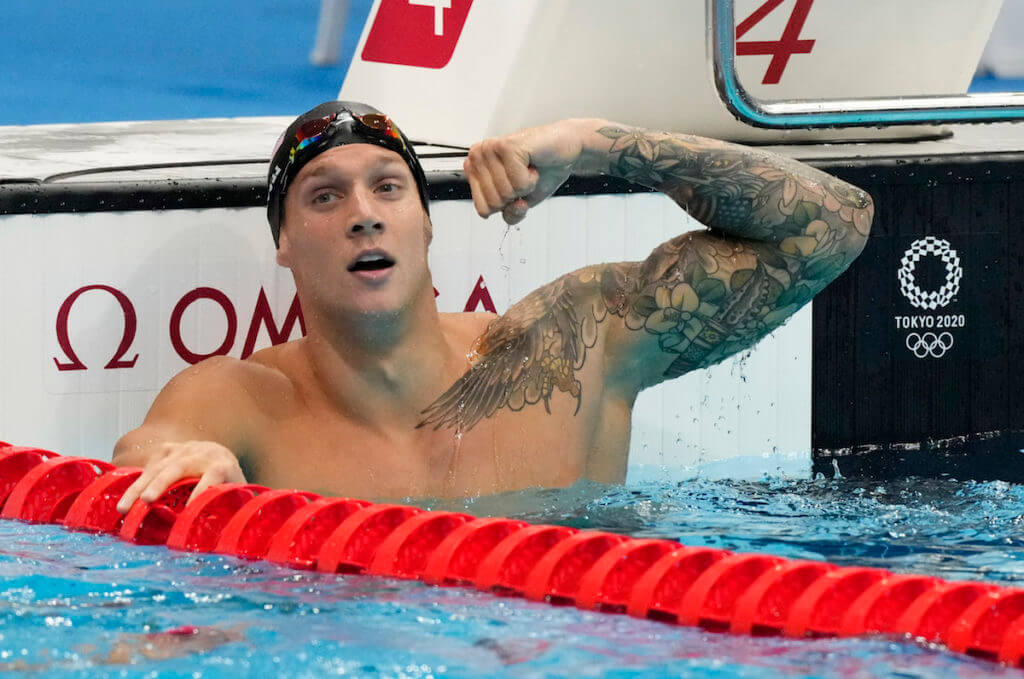What Makes Swimmers Amazing Athletes?

Swimmers love to take jabs at their own athletic abilities, like catching a ball or trying to run without twisting an ankle. However, at the end of the day, we all know that swimmers are some of the best athletes out there. Why is that?
Aerobics and Cardio
The first area of great strength for swimmers comes from their aerobic capacity. Before understanding what aerobic training does, you have to understand the importance of cardio. The term cardio comes from the word “cardiovascular.” Without getting too scientific, cardiovascular basically refers to the heart and blood vessel system that is vital to exercise… and life. Aerobic training is the type of training that strengthens cardiovascular activity and health. It is the exercise term you’ll most commonly hear used around swimming.
The Center for Disease Control and Prevention (CDC) recommends that adults do at least 30 minutes of moderate to intense aerobic activity per day, at least five days a week. A competitive swimmer can end up doing up to four hours of that type of activity six days a week. As you can imagine, that’s why swimmers’ hearts end up being exceptionally good at pumping oxygen. So, next time a swimmer tries to tell you that they “don’t run,” you can simply tell them that their excellent aerobic endurance says otherwise. If they twist an ankle, so be it.
Dryland, Weights, and Anaerobics
The other side of the aerobic coin is anaerobic exercise. Where aerobic means “with oxygen,” anaerobic means “without oxygen.” Instead of the longer endurance-based training of aerobic exercises, anaerobic exercise is shorter and more intense. It doesn’t require oxygen to execute. Swimmers exercise this system in a couple of different ways.
Sprinting short distances is one way that swimmers utilize that anaerobic system. Another common way a swimmer does anaerobic training is through their dryland and weightlifting training. The conversation around the best way to tackle dryland exercises for swimmers is endless, but there are several exercises that would undoubtedly benefit any swimmer. Most of those exercises focus on training explosivesness and quality. Weightlifting is also common to a swimmer’s training schedule and focuses on more of those anaerobic and muscle-building areas. Swimmers have the “strength” part of athletics covered.
Balance (Yes, Balance)
It may come as a huge shock to some, but swimmers possess a very refined sense of balance and body awareness. Think about it. Something as simple as stepping onto the blocks requires balancing your body in the air. Perhaps something a little less obvious is the balance required to move through the water in the different strokes. Freestyle and backstroke are asymmetrical strokes. To effectively perform them, swimmers have to balance the timing and coordination on both sides of their body. Then, when you throw in breathing every few strokes, there’s another level of balance required. In breaststroke and butterfly, the body movements are symmetrical and don’t require quite as much coordination. However, there’s still balance involved so you don’t start pulling harder on one side and end up doing a side crawl down the lane.
Body awareness is something else swimmers possess more of than they might realize. Proprioception is something that’s tightly coupled with body awareness. It is knowing where your body parts are and what they’re doing without being able to see them. Swimmers are the ultimate examples of heightened proprioception skills. Being able to swim through a pool on your back and know precisely when to flip and push off a wall while moving at a high speed is not something that just anyone off the street can do. The ability to know not only where your body parts are and what they’re doing, but also to know precisely where they are in “space” is something that swimmers are exceptional at. Swimming is the only sport where athletes are expected to race without being able to see where they are racing to.
Moral of the Story: Don’t Underestimate Swimmers
The great thing about swimming is that it offers ample opportunities to become well-rounded athletes and humans. Swimmers may not have the biggest muscles (unless you’re Caeleb Dressel), but their athletic abilities compare to other sports out there. Ultimately, swimming produces athletes that are uniquely equipped for what they do best – swim fast.
All commentaries are the opinion of the author and do not necessarily reflect the views of Swimming World Magazine nor its staff.




Very good article. I am informed!
Great Article.